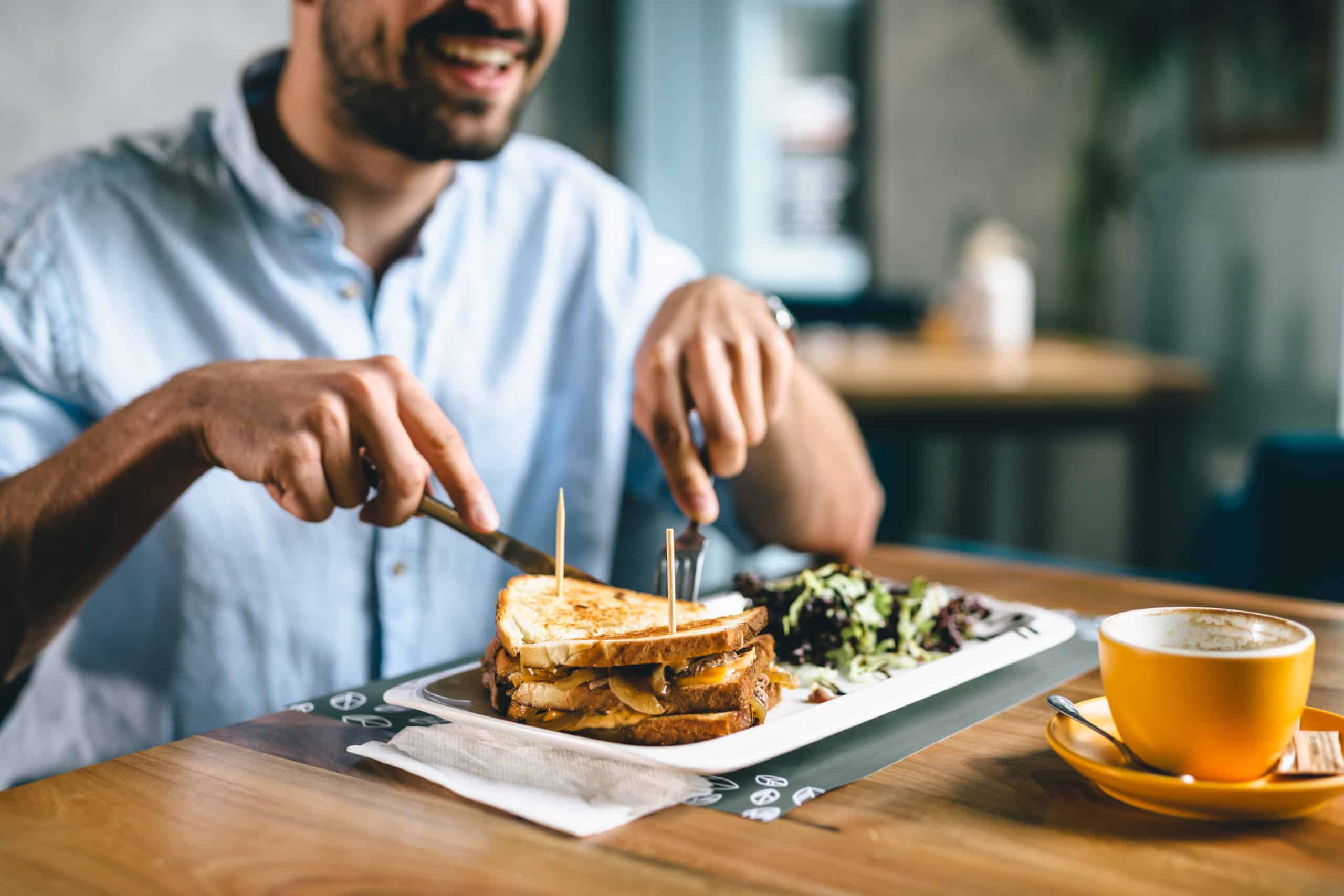If you’re trying to lose weight, you may have heard of the 1,400-calorie diet plan.
For some, eating 1,400 calories per day meets their health needs and satisfies their hunger, especially if they focus on less calorie dense foods. But for others, this is too few calories.
To learn more, we spoke with Noom Weight coach Emily Rivelli, MS, NDTR (nutrition and dietetics technician), and Casey Seamon, RD, LDN (registered and licensed dietitian nutritionist). Read below for their insight—plus a sample 1,400-calorie meal plan.
Note: Consult with your health care provider before making dietary changes.
Is 1,400 calories a day enough?
The 1,400-calorie weight loss plan helps you lose weight by eating in a calorie deficit—in other words, taking in fewer calories than your body burns.
For some people, 1,400 calories a day is enough for health needs as long as all nutrient needs are met. For others, it won’t be enough calories.
In an ideal world, one daily calorie range would help everyone lose weight in a healthy, enjoyable way. However, we all have different bodies and different needs.
According to Rivelli, many biological markers—like your height, weight, and age—contribute to your ideal number of calories per day. Other factors like habits, activity levels, health conditions, and how fast you hope to lose weight also play a role.
According to current USDA guidelines, calorie recommendations for adults vary. Women’s caloric needs range from 1,600 to 2,400 calories per day, and men fall somewhere between 2,000 to 3,000 calories per day.
At the same time, the National Institutes of Health recommends a 500 to 1,000 calorie deficit for safe weight loss.
Real results with a personalized weight loss program
Take the quiz!

However, while some people may feel sustained and fueled up by eating 1,400 calories per day, this isn’t true for many.
To find out if 1,400 calories per day are right for you, talk to your doctor or dietician. Once you get the green light, eat a wide range of foods, including lean protein, vegetables, fruits, and whole grains.
Also, make sure to pay attention to how you feel when reducing calories.
Rivelli says if you notice increased hunger along with headaches, fatigue, brain fog, and other biological signs, your body may be telling you that you need more calories.
If you experience any of these symptoms, it’s important to stop and let your healthcare provider know right away.
A week in the life: Sample 1,400-calorie meal plan
Want to get started on a 1,400 calorie program? Here is a sample seven-day meal plan with delicious breakfast, lunch, dinner, and snack options, developed by Seamon.
The plan includes a blend of lean proteins, fresh fruits and vegetables, and whole grains to keep you feeling full throughout the day.
| Day | Breakfast | Lunch | Dinner | Snack | Total Calories |
|---|---|---|---|---|---|
| 1 | Scrambled eggs, toast, and a banana (250 kcal) | Bento Box Lunch (380 kcal) | Instant Pot Chicken Tortilla Soup (392 kcal) | No Bake Peanut Butter truffles 1.5 servings (360 kcal) | 1,382 |
| 2 | Overnight Oats (250 kcal) | Chicken tortilla soup leftovers (392 kcal) | 6 oz. salmon, small baked sweet potato, steamed broccoli (324 kcal) | Green smoothie: almond milk, date, peanut butter, cinnamon, spinach, and a banana (390 kcal) | 1,356 |
| 3 | Avocado Toast and two Fried eggs (370 kcal) | Mixed Bean Salad with hummus and pita chips (389 kcal) | Chicken Quesadillas (437 kcal) | Strawberries, bananas, and low-fat Greek yogurt (238 kcal) | 1,434 |
| 4 | Pumpkin Pie Chia Pudding and a banana (205 kcal) | Hummus and Turkey Pinwheels (426 kcal) | Leftovers! (437 kcal) | Maple Caramel Popcorn (270 kcal) | 1,333 |
| 5 | Pumpkin Pie Chia Pudding and a banana (205 kcal) | Eat out for lunch (600-700 kcal) | Pork tenderloin, oven fries, and steamed green beans (315 kcal) | Raw broccoli and baby carrots with ranch dip (187 kcal) | 1,407 |
| 6 | Scrambled eggs, toast, and a banana (250 kcal) | Pizza Wrap (255 kcal) | Taco Salad with avocado (432 kcal) | Cherries and dark chocolate, and leftover peanut butter truffles (487 kcal) | 1,424 |
| 7 | Green Monster Smoothie (382 kcal) | Vegan Bistro Lunch Box (194 kcal) | Eat out at a restaurant! (700 kcal) | 2 cutie oranges (180 kcal) | 1,456 |
4 common weight loss challenges on a 1,400 calorie plan
Reducing your calorie intake isn’t easy, but healthy eating can be easier if you prepare for everyday challenges.
Rivelli shares the most common weight loss hurdles on a 1,400-calorie diet—and how you can overcome them.
1. Challenge: Feeling hungry or deprived
Eating less calories can be challenging if you start your weight loss journey without understanding how your body reacts to food.
Let’s say you’re used to eating larger meals, and you (and your doctor) decide that a 1,400-calorie diet is right for your body and weight loss goals.
You might feel like you can’t eat as much of your favorite foods, and that you’re suddenly eating more vegetables and smaller portions.
Solution: Think of calorie density when making food choices to feel full and satisfied
You don’t have to feel deprived on a 1,400-calorie plan. Balanced food choices are the key.
Calorie density, which refers to the quantity of calories within a certain weight of food, can help you strike that balance.
It’s an important approach to eating because it helps you feel satisfied with fewer calories.
- Foods with higher calorie density have more calories in a smaller portion.
- Foods with lower calorie density contain fewer calories per ounce.
Look for low-calorie dense foods like dark leafy greens and whole grains, which are full of fiber, and eggs which have a good amount of protein.
According to research, both fiber and protein can boost feelings of fullness, so you’ll feel satisfied longer.
Fill your diet with low-calorie density foods, and you’ll make progress toward your weight loss goals and feel nourished. You’ll likely have enough room for your favorite treats in moderation, too.
2. Challenge: Not addressing the emotional side of eating
If you’ve ever tried losing weight, you may have learned that weight loss is both a physical and a mental challenge.
Think about your current habits. Do you always go for a cookie or other sweet treat when you’re feeling bored? Do you consistently find yourself reaching for late-night snacks when you can’t sleep?
To make meaningful changes, you need to understand how emotions affect your eating habits.
Solution: Understand your habits to improve your relationship with food
In a recent multilevel analysis, participants agreed that weight loss isn’t just about learning how to eat.
Losing weight should include a psychological approach, too—this can help you understand things like stress eating, food triggers, and how to eat mindfully.
Noom Weight can help you uncover answers to common questions with lessons about mindful eating.
- How can I tune into my body’s hunger and satiety cues?
- Why do I tend to skip breakfast?
- What’s the story behind my current habits?
Building healthy new habits begins with understanding the current habits that hold you back.
When you know what your emotional triggers are, you can take small steps to change the behaviors that are keeping you from seeing the results you want.
3. Challenge: Hitting a weight loss plateau
Plateaus can happen at any time, and they’re especially common with restrictive, unsustainable diets. One study suggests that plateaus can even happen prematurely when you are inconsistently sticking to a low-calorie diet.
It’s discouraging when we stop seeing our weight loss efforts pay off—especially if we’re following a lower calorie range.
While it’s tempting to give up when your weight loss stalls, research suggests that plateaus are a critical point in any weight loss journey.
When you hit a plateau, your resting metabolic rate (the number of calories your body burns at rest) and hormone levels re-adjust.
Solution: Overcome plateaus by focusing on your mindset
Rivelli agrees that plateaus can be frustrating—you’re trying hard, but the scale isn’t reflecting all the effort you’re putting in.
But she also sees them as an opportunity.
Plateaus are a good time to zoom out and look at the big picture. If you’re doing the same thing on repeat but not getting the results you’d like, that may be a sign to mix things up.
First, try re-calculating your ideal calorie deficit with your current weight. Noom Weight will calculate this for you as you progress. You can also log foods and track your calories throughout the day, so you never have to wonder if you’re on track.
Once you know your caloric deficit, experiment with new recipes to keep things fun. Try adding healthy foods to your plate that are different from your go-to options.
Rivelli also suggests reflecting on how your environment may be affecting your goals—is it helping you reach your goals or making things harder?
Have things readily available to support your efforts, like a bowl of fresh blueberries on the counter instead of chips, a shopping list on your fridge, or pre-portioned snacks.
Setting yourself up for success can help make this challenging process easier.
4. Challenge: Not being able to stick to 1,400 calories
Sticking to a 1,400-calorie diet meal plan may be tough, especially if it’s a big shift from your normal eating habits.
Let’s say you’ve been eating 2,000 calories a day for a while now. That is a 600-calorie difference that you have to adjust to.
And the fact is that this change isn’t one you can do from one day to the next—it has to be gradual.
Solution: Include quality protein into your meals for optimal satiety
Aim to include good sources of protein at meals (like chicken or turkey breast), which Seamon says can help tame hunger.
If you try a 1,400-calorie diet and it doesn’t feel right for you, that’s okay, too. 1,400 calories per day may not be right for everyone—as no two bodies are exactly alike.
Aim for progress over perfection
When starting your weight loss journey, it’s easy to get wrapped up in the idea of doing everything perfectly so you can get the results you want, fast.
But Rivelli suggests eliminating black-and-white thinking and instead finding the space where you make consistent efforts toward your goals, even if every day isn’t perfect.
Weight loss takes time. Slip-ups, slight weight gain, or plateaus can happen on any weight loss diet. Instead of getting discouraged during these moments, see them as a chance to pick yourself up, dust yourself off, and continue to try.
If you get stuck, we’re here to help. Read our weight loss article to learn more about why you may not be losing weight (even if you’re eating within a calorie deficit).



